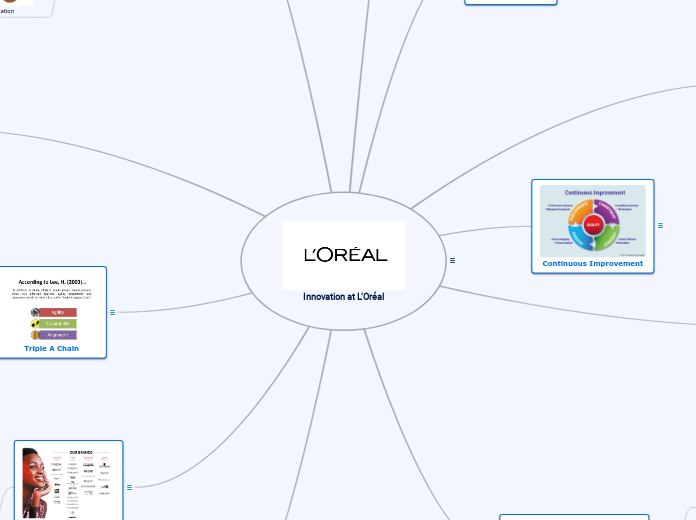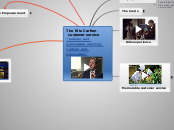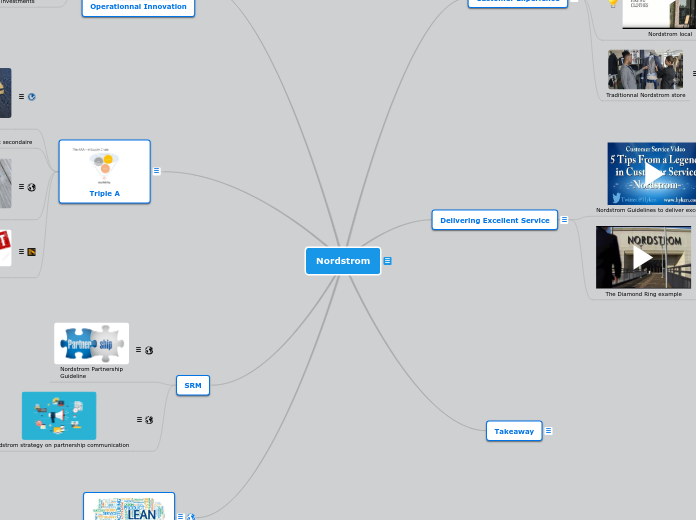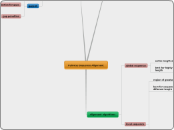Topic flotante
New product launches
It is a common rule in a beauty industry that every once in a while (normally it is aligned with competitors' launches) a new product or a new addition to the same product is been launched.
Events
This is an example of an annual private event that YSL Beauty organises for bloggers and influencers to introduce new launches.
Influencer marketing
Innovation at L’Oréal
L’Oréal, the world's largest cosmetics company, is a global leader in operational innovation and digitalization to serve their ever-evolving beauty customers worldwide. L’Oréal’s operations are quite complex – with its business presented in 140 countries, 42 factories, 45 brands and at least 8 distribution channels. Therefore, in order to operate successfully, L’Oréal’s strategy is highly dedicated to innovation. Thus, L’Oréal continues to invest in cutting-edge technology solution and supply chain transformation. This Mind Map will walk you through most important steps that contribute to L’Oréal’s innovation.
Stock Management
Inventory control department works closely with marketing department to observe sales and stock (in Ukraine it was once every three weeks), sending out inventory and new products to meet product orders and make sure that stock is sold out completely. Adjustments are made to promotions and some production plans depending on inventory levels monitoring remaining products weekly (or even daily by a sales person).
Main challenge for a company like Loreal is sales forecast predictions. Artificial Intelligence might be used in the future to forecast sales more precisely, to avoid overstocking, unnecessary occupation of storage space and redundant costs. AI platforms can analyze sales and stock movements, and make recommendations on which and how many products to order.
Operations Integration
L’Oréal puts a great emphasis on integrating all business processes within organization, thus, all the departments are interconnected. L’Oréal has a structure of 4 main divisions – Consumer Division, Luxe Division, Active Cosmetics and Professional Division. For each, different commodities and distributions channels are used, and each has its own marketing and finance departments. However, everything is produced at the same factories and held in same warehouses, and normally, the logistics department is also one across all the divisions.
Marketing
Marketing department plays a crucial role in L’Oréal’s success. As all products are very consumer-based, various marketing campaigns, merchandising, promotions and quality guarantee at the other side of the supply chain (which is customer) are crucial and is a responsibility of marketing department. As I worked as a Junior Brand Manager, my responsibilities were closely tightened with the Logistics Department.
Here you can see a beautiful campaign that I worked on – for the launch of a new series of Mon Paris perfume franchise. In fact, I think perfume adds are the most beautiful.
Triple A Chain
L’Oréal puts a key importance on internationalization and its global consumer, using a triple-A supply chain strategy to continually adapt to customer needs. As a takeaway from our class, agility can be defined as the ability to deliver the same cost, quality and customer service given the level of demand and supply volatility. L’Oréal is becoming increasing digitalized to meet shifts in demand. In China, for instance, almost 40% of L’Oréal sales is done through e-commerce (normally the rate is 20-25% in L’Oréal considering its growth and expecting the trend to continue). In order to ensure alignment, as I explained previously, Operations department is working closely with its Marketing team. With a focus on consumer, the company monitors consumer preferences and aligns its product portfolio according to that (for example, even tastes in perfumes, or more environmentally-friendly products). In addition, as L’Oréal operates in so many countries and regions, it adapts to the preferences of the specific location. For example, a Marketing Manager would only make an order of those products that he/she believes is relevant to the market. In addition, L’Oréal can sometimes produce region-specific products, such as whitening creams for an Asian market.
Sustainability
L'Oréal has a strong legacy in sustainability. In fact, it is continuously being named one of the most sustainable companies in the world. First of all, L'Oréal focuses greatly on its environmental footprint and is constantly working on reducing its CO2 emissions, water consumption, increasing the use of renewable energy (such as solar energy by using solar panels) and sustainable materials not only inside the actual product but also in packaging.
Also, L'Oréal provides sustainable conditions for all of its employess, such as health coverage, financial protection or training on request of an employee (yes! In L'Oréal you can come to your manager and say ‘I think I need some training to advance in digital marketing’ and you will get it).I literally can talk for ages about sustainability at L'Oréal. But one last thing, L'Oréal really does care about being sustainable and even in countries, such as Ukraine, where I am from, where sustainability is still a concept that is under development, pursues sustainable practices. For example, in Ukraine we barely sort any rubbish, however, in our L'Oréal office we had to do so. And also L'Oréal worked with only those suppliers/creative agencies who would guarantee post-production recycling of all the materials used during work with L'Oréal.
What the future holds
In May 2019 L’Oréal attended a VivaTech conference where presented four main direction of beauty innovation. I will leave the video here, if you want to watch, however, it is a bit long, so I will summarise the main takeaways.
Will add from myself that I also believe that the future of operations lies in robotic automations. There are industries, where human capital is indeed needed, however, from what I have learnt, beauty/cosmetics is an industry which operations can and even should be fully automised. Human Capital (scientists, managers, engineers) should be more involved in R&D and designing new products and processes, while machines will be the ones implementing. This option provides a cost effective and sustainable solution for organizations on a global scale.
Limitless Personalisation
Tools that would identify customer's skin type or shade.
Limitless Agility
Cashier-less payments and Beauty Vending Machines: for customers who know what they want and looking for a quick way to purchase a product.
Limitless tech
Augmented Reality: a Virtual Hair Stylist or a Virtual Make-Up Artist giving a professional advice
Limitless Creativity
Use of AI powered by the latest Instagram trends - a digital screen showing the latest beauty trends.
Product Development/Innovation
To stay ahead of the competition and remain a major innovator in cosmetics industry, L’Oréal puts much effort into Research & Development. Major part of its innovation is dedicated to finding unique combinations of active ingredients by experimenting with various combinations of molecules to come up with truly effective products that are safe to use as well are sustainable. In addition, L’Oréal makes high investments in digital innovation. The examples of such are implementation of VR to let customers try on the product without actually wearing it or skin patches that help to measure the person’s UV exposure to help them identify the right level of protection. This article from Forbes explains digital innovation in L’Oréal in more details.
Open Innovation
L'Oreal not only accepts ideas from outside but even encourages them at all levels within organisation, and also outside of it. The link attached explains how L'Oreal encourages anyone with an idea to introduce it and possibly co-create it together with L'Oreal.
Pioneer in producing fake skin to test
its products
In 1979 L'Oréal became a pioneer in producing fake skin to test its products on. Thus, nowadays L'Oréal is almost 100% animal test free, except from China where animal testing under the protection of law (it is compulsory).
3D Printing
Total Quality Management
As we learnt in class, Total Quality Management, as one of the Lean Management Tools, makes sure that everyone in the company is committed to maintaining high standards of work at every stage and in every aspect of company's operations. Thus, the purpose of TQM is to improve the quality of organization's outputs, including goods and services, through continuous improvement of internal practices. As L'Oréal is a cosmetics company that can be very sensitive to mistakes related to quality (as it can cause health problems, sometimes very serious ones), therefore, the guarantee of safety and quality at L'Oréal is key. Thus, the company created some control processes to continually improve quality.
L'Oréal is exploiting technology to ensure that “the product is perfect at every step of production” (L'Oréal, 2019). A good example of that is a smart robotic system in Lassigny plant in France that allows employees save time and focus on quality control. They also help to reduce bottlenecks in the manufacturing process. In addition, as L’Oreal’s products take many steps in distribution (as it is a long way from the primary plant to a retailer in a different country), it is a challenge for L’Oréal to ensure that the quality is not lost somewhere in the middle of the process. Therefore, the company puts a huge emphasize on quality checks and undertakes about 100 quality controls during the whole operational cycle of the product. From my own experience, even me, as an intern at a managerial side, had to go to stores to perform a check-up of products presented for sale. Even a minor damage of a packaging is unacceptable at L’Oréal as it might indicate deterioration of quality.
L'Oréal Product Control Testing
Continuous Improvement
L’Oréal is number one beauty company in the world. It is because of continuous improvement of its practices and constantly perfecting them that L’Oréal surpasses its competitors and always surprises its customers with innovations and exceptional quality. The challenge here is this demand for quality and perfection must be sought at the best cost, optimizing use of the company’s assets, industrial investment, stocks and customer credit. And seems like L’Oréal is pursuing this successfully.
Operational Excellence
L’Oréal puts operational excellence as its main objective - keeping up with consumption patterns and industry 4.0. In 2017 L’Oréal has even won an operational excellence prize for excelling in the following areas:
Quality: with an average of 100 quality control checks for each product, customer safety and satisfaction is a priority at L’Oréal.
Industrial performance: stable industrial footprint through global production has increased by 20%.
Optimisation of delivery times and transport costs: optimisation of flows, routes, stocks and transportation costs globally. L’Oréal has concentrated its network of international transport companies, working with them at the global, regional and local level for optimal results.
“goods-to-person” system
For example, in North America and Western Europe L’Oréalhas implemented a “goods-to-person” system in distribution centres. With this automated process, boxes with products and packaging are delivered directly to the operator, significantly improving work station ergonomics. It is a great example of operational excellence as it contributes to logistics modernization and can be very useful, for example, when unforeseen demand occurs.
Warehouses in the regions
For example, in Ukraine we have a big warehouse that keeps inventory for the region (includes Ukraine, Georgia, Azerbaijan and Armenia). Orders from the manufacturing plant are being made once in a quarter, then inventory is being kept in regional plants, after being distributed to further locations. L’Oréal maintains an organised system of stock management and distribution to reduce its carbon footprint.
Kateryna at L'Oreal
Hello, so here is supposed to be a picture of me at the L’Oréal warehouse (I sent it
to you by mail). I worked at L’Oréal for almost a year (firstly, as an Intern
and then as a Junior Brand Manager) and I loved the company. My duties were so
diverse and exciting that appeared like a great surprise for a girl who just
graduated at that point. Speaking of Operations, my responsibilities were very
much aligned with a Logistics department. And even though my region was not
manufacturing products, Ukraine is a large consumer market for L’Oréal, as well
as we were also in charge of three more countries. Saying that, Marketing
Department was greatly hated by the Logistics, as we would also claim some last
minute changes to the order or request some last minute production of packaging
etc. After taking this course I understand why they hated us...
Takeaways
Finally, during my time at L’Oréal I already got an idea of how different departments are interconnected; however, before this course I, maybe, did not fully realize to what extent. It was interesting for me to learn how different approaches and tools can significantly reduce waste, save time, and, therefore, save a lot of costs. One minute of time reduction for one process, in accumulation, can save days of waste, and help the company innovate faster. Automation and robotization can help reduce unnecessary use of human force, and, instead, direct it into the thinking process and creation of new things.
Innovation is not only about
designing things, but also very much depends on how these things are
implemented (as well as how fast and how efficiently), because if someone else
does it faster, this would no longer be an innovation. The most efficient ones
are rewarded, not necessarily the fastest.
In my next job (as I’m
planning to continue with Marketing) I will be more understanding towards the
Operations Department and will try not to come up with last minute changes.
Saying that, will try to not be late with things starting from now :)









